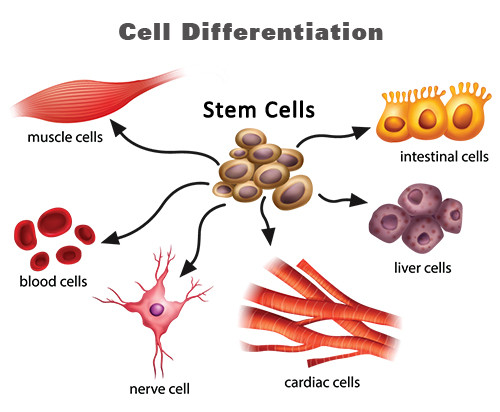The MESO-BRAIN consortium is a collaborative research effort, led by the UK’s Aston University and funded by FET and the European Commission, that’s focused on developing 3D human neural networks that can imitate brain-like activity—essentially emulating the human neural network. The ultimate goal of the project is to gain a better understanding of human disease progression and neural growth in order to determine how to treat a variety of debilitating conditions, such as Parkinson’s disease, dementia, and trauma, so it’s a pretty big thing to tackle. In order to emulate real brain activity, the consortium plans to use nanoscale 3D printing and 3D printed stem cells.
As Medline Plus explains it, stem cells are basically a repair system for our bodies, as they are unspecialized, which means they have no specific function within the body. Because these unique cells basically go wherever they’re most needed, they have the potential to actually develop into different types of cells, such as blood cells, brain cells, and muscle cells. Additionally, they can both renew and divide themselves over a long period of time, which makes them even more versatile.
 Image courtesy of BiologyWise.com
Image courtesy of BiologyWise.comThe MESO-BRAIN project is using human-induced pluripotent stem cells in order to fabricate complex shapes that will hopefully make it possible to have more precise interactions with neurons, in an effort to help with the treatment and understand of neural diseases. These cells will be placed onto 3D laser-printed structures to replicate the brain’s neural networks, which will make it easier to monitor the activity of elements using electrical stimulation…a challenge when growing artificial stem cells in a flat petri dish, as they can’t properly imitate in vivo 3D interactions or developmental cues in real living organisms.
“MESO-BRAIN aims at developing functional, three-dimensional human stem cell-derived neuronal networks of defined and reproducible architecture, based on a brain cortical module that displays in vivo connectivity and activity. Thus, the development of such a technological platform will be foundational for a new era of biological and medical research based on human neural networks,” the FETFX project page for MESO-BRAIN states.
Hopefully, the results of this project will allow for improved development of large-scale cell-based assays, which are analytic procedures for quantitatively measuring or qualitatively assessing the amount, presence, or functional activity of the target, whether it’s a biochemical substance, chemical element, drug, or cell in an organism or organic sample. With better testing, it will be easier for researchers to investigate the effects of various toxicological and pharmacological compounds on a person’s brain activity and determine the best course of treatment for the previously mentioned neural conditions, as well as gaining a better understanding of them. In addition, if the project researchers are successful, this could pave the way to creating more physiologically accurate models, thus improving the efficiency of drug screening and negating the need for animal testing.
 Image courtesy of FETFX Project
Image courtesy of FETFX Project(Source: Science Times)
Subscribe to Our Email Newsletter
Stay up-to-date on all the latest news from the 3D printing industry and receive information and offers from third party vendors.
You May Also Like
InfinitForm Comes out of Stealth with AI Co-pilot for Manufacturing Design
As manufacturing goes digital, new software tools are proving to be the key to streamlining the connection between users and advanced manufacturing hardware. Whether that is artificial intelligence (AI) for...
3D Printing Webinar and Event Roundup: April 21, 2024
It’s another busy week of webinars and events, starting with Hannover Messe in Germany and continuing with Metalcasting Congress, Chinaplas, TechBlick’s Innovation Festival, and more. Stratasys continues its advanced training...
CDFAM Returns to Berlin for Second Annual Symposium
The second CDFAM Computational Design Symposium is scheduled for May 7-8, 2024, in Berlin, and will convene leading experts in computational design across all scales. Building upon the first event...
BMW Targets WAAM 3D Printed Test Parts for Vehicles Next Year
The BMW Group has long been a user and innovator in additive manufacturing (AM) technology, dating back nearly 35 years. Nevertheless, the auto giant never fails to impress in the...

































